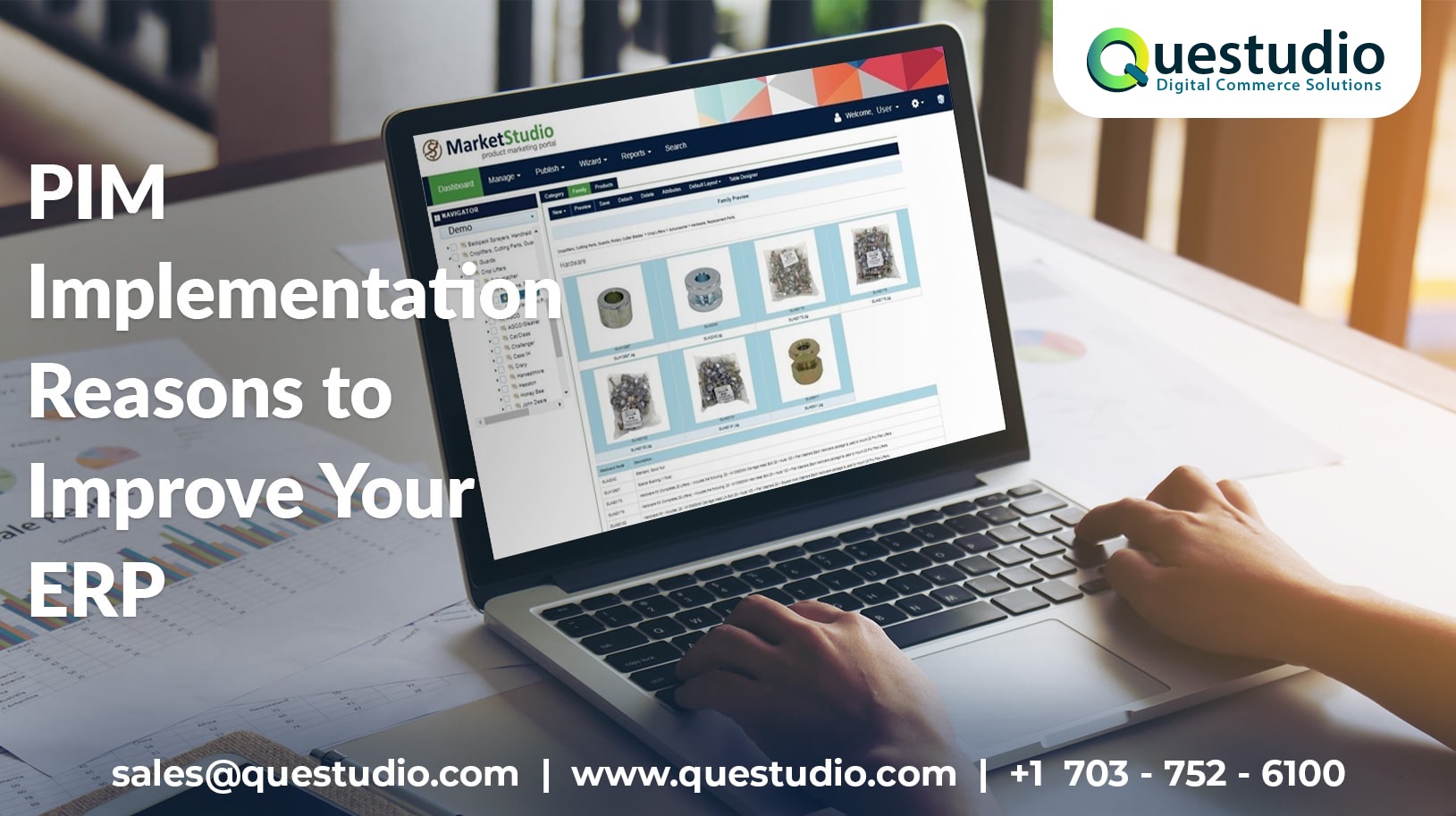PIM Implementation: Reasons to Implement a PIM System
How many of you are aware of the fact that a PIM Implementation can assist you in streamlining your business processes and making more powerful use of your enterprise resource planning system?
In this blog we’ll go over the differences between ERP and PIM, as well as how they work together. In an ideal world, a company would have both an ERP and a PIM. In the absence of measurable benefits from a PIM Implementation, many businesses find it difficult to market their products and services to customers through traditional channels. Today, we’ll look at four ways that a product information management system can assist you in improving your product marketing efforts.
An enterprise resource planning system (ERP) is a central hub for organising and optimising various back-end business processes. An enterprise resource planning system (ERP) manages transactional data such as customer records, parts lists, prices, inventory, sales, and order processing, among other things.
It is not intended for use in the generation or management of product information aimed at customers. An enterprise resource planning system (ERP) serves as the “Grand Central Station” (or London Waterloo) where a company’s internal data sources come together.
A PIM is primarily concerned with the product. The purpose of PIM Implementation is to collect and manage product information — such as descriptions and images as well as video assets, specifications, and more — and to distribute that information to customers through various channels such as e-commerce websites, marketplaces, mobile devices, and print catalogues. A product information management software(PIM) is a drawing board where you can create product presentations for customers.
Advantages of PIM Implementation
Data onboarding has been made more efficient and quicker. Many businesses use their ERP to design and manufacture all of their products. This strategy is confronted with two difficulties:
In part due to the limited number of product data fields applicable in the ERP system, enriched product information must be maintained in an external system or, in the worst case, in a spreadsheet. As a further drawback, ERP systems typically do not include a portal through which suppliers or content providers can enter data.
By starting the product life cycle in PIM Implementation from the beginning, the path to market becomes shorter and more productive. Suppliers can connect to the system in order to upload detailed product data. Additions and modifications to product specifications and hierarchies are straightforward.
In order to ensure consistency in product comparisons and browse/search parameters across multiple suppliers, data from multiple suppliers can be normalised into standard formats.
Furthermore, the core transactional product attributes (units of sale, measurements, and so on) can be easily exported to the ERP system for further processing. By utilising the PIM as a product staging area, it is possible to keep the ERP free of non-sellable items. All relevant product details are consolidated into a single workspace, allowing each product to reach the market in less time than previously available.
The ability to communicate bidirectionally with other systems, databases, spreadsheets, and programmes, including ERP, is built into PIM systems through built-in connectors (API). Products such as photos, schematics, videos, and data sheets can be collected and used in the e-commerce product presentation through the Product Information Management system (PIM).
When used internally, PIM Implementation allows for a seamless, automated exchange of information for the purposes of sharing, reporting, and analysis. An analyst or team will no longer be required to comb through multiple data sources in order to compile meaningful information or develop customer-facing products satisfied as a result of this capability.
PIM Implementation improves product experiences. Product information management (PIM) provides unrivalled insights into the completeness and performance of an item. When you take advantage of all of the capabilities available in PIM, you can provide customers with a rewarding, contextual, and personalised product experience, allowing them to find the right products quickly and easily.
Improved SEO and conversions will result from including natural language descriptions, features and benefits, and explanations of how products solve customer problems. Products with more detailed data, such as multiple tags or keywords, are more likely to be found using faceted search, which narrows the field of options and results in an overall better shopping experience.
Also possible with PIM Implementation is the ability to combine product content with analytics, thereby providing managers throughout the organisation with actionable intelligence to make decisions. Through its universal connectivity, the PIM gathers information about the external market and its performance (Key Performance Indicators such as sales, returns, inventory, regional patterns, page views, customer ratings, SEO, click-throughs, etc.).
Data optimization for the creation of clean, complete, and accurate product information suitable for e-commerce. The quality of data is demanding to the success of any e-commerce venture. PIM Implementation enables you to create and maintain governance rules that ensure data consistency and consistency of information.
The reporting function can identify and highlight exceptions (such as missing images), errors, and data gaps, allowing you to correct them as needed. Content managers have complete visibility and control over all aspects of product data thanks to the powerful functionality of PIM.
In summary, we can say:
With PIM Implementation, you can avoid the frustration of attempting to use the ERP beyond its intended functionality.
Product information management (PIM) is a comprehensive set of tools for collecting, creating, organising, and maintaining product information. Unlike enterprise resource planning (ERP), the PIM interface is designed with marketers and retailers in mind.
Product information management (PIM) enables you to bring products to market more quickly and efficiently.
To learn more about how Questudio’s PIM Implementation can help your business thrive, request a demo or get in touch with one of our PIM experts today.
Related Posts





